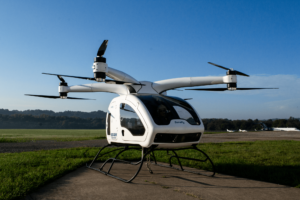Some of the greatest minds in history have dreamed of the future and come up with what now appear to be some bizarre pedictions. We all wonder about what is to come, Here are some of the things others said we should expect.
Thomas Edison played a role in some of the greatest inventions of modern man, from light bulbs to movie cameras. But not all of his ideas worked out. During a 1911 interview, he predicted that the house of the next century “will be furnished from basement to attic with steel.” And it wouldn’t end there. “The baby of the 21st Century will be rocked in a steel cradle,” Edison said. “His father will sit in a steel chair at a steel dining table, and his mother’s boudoir will be sumptuously equipped with steel furnishings.”
In 1950, Associated Press writer Dorothy Roe revealed some shocking predictions of what life on Earth would be like in the 21st Century. Among her more head-scratching forecasts were that the women of tomorrow would be “more than six feet tall”, would “wear a size 11 shoe, have shoulders like a wrestler, and “muscles like a truck driver.” Her proportions, Roe wrote, would be perfectly “Amazonian,” due to science providing “a balanced ration of vitamins, proteins and minerals that will produce maximum bodily efficiency.”
Thomas Watson, the one-time president of IBM, suggested in 1943 that future consumer demand for his company’s products was limited at best. “I think there is a world market for maybe five computers,” he said. As of 2014, there were an estimated 2 billion personal computers in use across the globe. Watson wasn’t the only computer expert who thought there was no future in his industry. Ken Olsen, founder of Digital Equipment Corp., predicted in 1977: “There is no reason anyone would want a computer in their home.”
We have blood blanks, where life-saving plasma can be donated and used to help patients who need emergency blood. So why not tooth banks? Modern Mechanix magazine had an article in a 1947 issue which promised that, in the future, tooth banks would not just be realistic but a good idea. “Picture the possibilities,” the story read. “Into the junk pile will go all artificial dentures, all bridges, plates, partial plates. All men and women of whatever age will be able to have human teeth imbedded inside their gums until the day they die.
If you’re curious about the future of language, maybe you don’t ask a railroad engineer. But that’s what the Ladies’ Home Journal did in 1900, asking renowned engineer John Elfreth Watkins Jr. for his educated guesses about the 21st Century. He had no love for what he considered extraneous letters, and so boldly predicted that by 2020, “There will be no C, X or Q in our everyday alphabet. They will be abandoned because unnecessary.” Instead, Watson wrote, we’d be spelling mostly by sound and would only communicate with “condensed words expressing condensed ideas.”
We’ll wear antenna hats and disposable socks. Why anyone asked furniture and industrial designer Gilbert Rohde what he thought the “21st Century man” would be wearing is beyond us. But ask they did, and his answers were published in a 1939 issue of Vogue magazine. The man who helped define American modernism thought that, by 2020, we would have banished buttons, pockets, collars and ties. “The man of the next century will revolt against shaving and wear a beautiful beard,” Rohde declared. “His hat will be an antenna, snatching radio out of the ether. His socks disposable, his suit minus tie, collar and buttons.”
Human feet will become just one big toe. In a lecture to the Royal College of Surgeons of England in 1911, a surgeon by the name of Richard Clement Lucas made the following curious prediction: “Human beings in the future will become one-toed,” he promised. “The small toes are being used less and less as time goes on, while the great toe is developing in an astonishing manner.” In roughly 100 years, Lucas predicted, our outer toes would gradually disappear and “man might become a one-toed race.”
Houses will be cleaned by hose. Have you ever wished that you could clean your house with a big hose, soaking everything and then being done with it? Popular Mechanics during the 1950s promised grand things in the next century for the housewife who dreams of keeping a spick-and-span house by “simply turn(ing) the hose on everything.” It’ll be more than possible in the year 2020, the story promised, as furniture will all be made of synthetic fabric or waterproof plastic. “After the water has run down a drain in the middle of the floor (later concealed by a rug of synthetic fiber),” the article explains, “she turns on a blast of hot air and dries everything.” Any soiled linen is thrown into the incinerator, and presto, done for the day.
Nobody works and everybody’s rich. As reported by Time magazine in 1966, the 21st Century promises to be a pretty awesome time for just about everybody. By 2020, “the machines will be producing so much that everyone in the U.S. will, in effect, be independently wealthy,” the article assured readers. without even lifting a finger, the average non-working family could expect to earn an average salary of between $30,000 and $40,000. That’s in 1966 dollars; by 2018, that’d be about $307,000. For doing nothing. Yes, we’re apparently heading into a pleasure-oriented society full of “wholesome degeneracy.”
